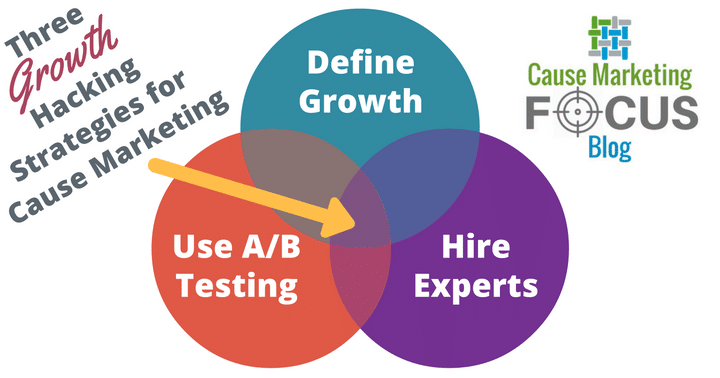 By Joe Waters, Guest Contributor, Selfish Giving
By Joe Waters, Guest Contributor, Selfish Giving
Most commonly used in the startup world to describe a laser-like focus on accelerating business growth, growth hacking is a mindset that nonprofit organizations—or anyone who wants to scale quickly—can adopt. Here are three growth hacking strategies for those who want to grow their cause marketing program by leaps and bounds instead of fits and starts.
Define Growth
I know what you’re thinking: growth means money. I agree! But that’s not the only metric cause marketers should be measuring. If you’re only focused on raising money, you’ll soon run out of things to count.
Here are two other things you should be growing and measuring.
First, the number of business contacts you have and the quality of those relationships. Where are these contacts in the sales funnel? Are they in the awareness stage, where you are just learning about them and vice versa? Or are they further along where you can call them a legitimate lead or prospect?
Second, the number of subscribers to your email newsletter. Too many organizations are focused on collecting donations from their website visitors when they should be busy signing them up as subscribers. The first thing people want to give when they visit your site is their interest and attention—not their money. Encourage them to sign up for your email newsletter. I promise that you’ll identify more than a few potential business partners in your subscriber list.
A large, engaged subscriber base is also a great asset that you can show off and market to a potential partner.
Use A/B Testing
A/B testing (sometimes called split testing) is when you test different versions of something to see which version works better.
For example, say you want to test which appeal for your organization will work best at the register. I did this when I first started doing cause marketing for a Boston hospital. We asked, “Which is better, to ask customers to support our organization (i.e., the Boston hospital) or to ask them to support our cause (i.e., poor, sick kids)?” To find the answer, we asked one of our retail partners to split-test the appeals in their stores. It took just a few days for us to confirm that shoppers donated more frequently when they were asked to support our cause.
Another place I use split testing is on social media. For example, when I share my posts on Twitter, I test different headlines to see which one works best. I track the open rates on each with Twitter analytics. Once I figure out which headline is getting the most clicks, I use that tweet exclusively. I do the same thing for my email newsletter. On Wednesdays I send it out with one headline. On Thursdays I send it out with another. The result is more opens, more readers and more insights into what people want.
Hire Outside Experts
While 90 percent of businesses have said that outsourcing work to freelancers, consultants and freelancers is critical to their growth, nonprofits haven’t gotten the memo.
Just about every week I hear from nonprofits that are looking to hire someone to do cause marketing. But there are two challenges.
First, few people have direct cause marketing experience. Cause marketing is a niche skill set that most people just don’t have. Sure, they can learn on the job, but this is an expensive education for nonprofits and usually has a poor ROI.
Second, some of the people who do have cause marketing experience are not suited for your nonprofit. They’ve worked at powerhouses like Feeding America or Komen or The Salvation Army. These are big institutions with multi-million dollar cause marketing programs.
But here’s the secret: These people know little about how to start and grow a cause marketing program for an organization that isn’t a brand heavyweight. These individuals are talented account managers, for sure, but their field is service, not sales. They’re great when a company comes calling with their 5,000 locations and seven-figure advertising budget. But they’re not so good when it comes to starting a cause marketing program and selling to companies from a cold start.
I’ve talked to these shell-shocked people shortly after they’ve started with “Average Joe” nonprofit.
“No one calls me back.”
“My board isn’t helpful.”
“I have to do everything myself.”
“No one knows who we are.”
“All the companies I call are already working with a major charity.”
“This is the hardest thing I’ve ever done in my life.”
You bet it’s hard work.
That’s why most nonprofits shouldn’t hire a full-time cause marketer. They should outsource their cause marketing to a consultant or agency. Sure, it will cost more money in the beginning. But you’ll see better results faster and ultimately raise more money, which will offset the expense.
If you’re truly focused on growth-hacking cause marketing, nothing else will do. What do you think of these growth hacking strategies?

Leave a Reply